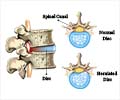Researchers are exploring novel approaches to treat chronic low back pain in individuals aged 60 to 85.

HIP-FOCUSED PHYSICAL THERAPY REDUCES LOW BACK PAIN
Go to source) Conducted between November 2019 and April 2022, the study involved 184 participants who were randomly assigned to either hip-focused or spine-focused therapies delivered at the researchers’ locations over an eight-week period, including at the Physical Therapy Clinic on UD’s Science, Technology and Advanced Research (STAR) Campus. The study participants were evaluated for pain-related disability, walking performance (speed and endurance) and the ability to rise after being seated in a chair.
Hip-Focused Therapy Reduces Immediate Low Back Pain Disability
The findings, published in The Lancet Rheumatology, indicate that while both therapies improved walking speed similarly, the hip-focused therapy resulted in a greater reduction in disability from low back pain immediately following the eight-week intervention, but no difference at six months.‘The therapy centered on the hip led to a more substantial decrease in low back pain-related disability among the elderly. #backpain #backpaintherapy #lowbackpain’





“So essentially, the people who received the hip-focused intervention get better faster, in terms of low back pain disability,” Hicks said. “The other group with the spine-focused therapy catches up, but it takes longer.” However, further analyses found that 46% of participants in the hip-focused group and 33% in the spine-focused group had a substantial improvement in disability scores (50% or greater reduction in disability scores) while 53% of the hip-focused participants and 60% of the spine-focused participants had substantial improvement in gait speed. In addition, the hip-focused treatment was associated with greater improvements in chair-rise performance at six months and walking endurance at eight weeks and at six months.
The MASH clinical trial builds on the results of Hicks’ previous NIH-funded research, which was a longitudinal study following older adults with chronic low back pain for one year, specifically examining the role of hip impairments relative to low back pain and overall physical function.
“It’s becoming quite clear,” Hicks said, “if you make the assumption that all low back pain is the same, you’re wrong. If you can identify sub-groups of low back pain patients with similar traits, you can develop matched treatments, which hopefully lead to better outcomes.”
Distinct chronic low back pain sub-groups came to light with the aid of artificial intelligence and modeling tools — one sub-group had significant issues with hip weakness and hip pain, another had significant hip weakness without hip pain, and yet another had no issues with the hip at all. As each sub-group emerges, so does the prospect of precision medicine and precision rehabilitation.
Advertisement
“I’ve always had this sort of special place in my heart for this older age group,” Hicks said. “When I started this work, there were a lot of naysayers. I’d tell them, ‘Read the literature — why are we excluding older adults from low back pain research?’ We all hope to get older. Why ignore a place in time where we all hope to end up?”
Advertisement
Reference:
- HIP-FOCUSED PHYSICAL THERAPY REDUCES LOW BACK PAIN - (https://www.udel.edu/udaily/2023/december/greg-hicks-low-back-pain-therapy-mash-clinical-trial/)










